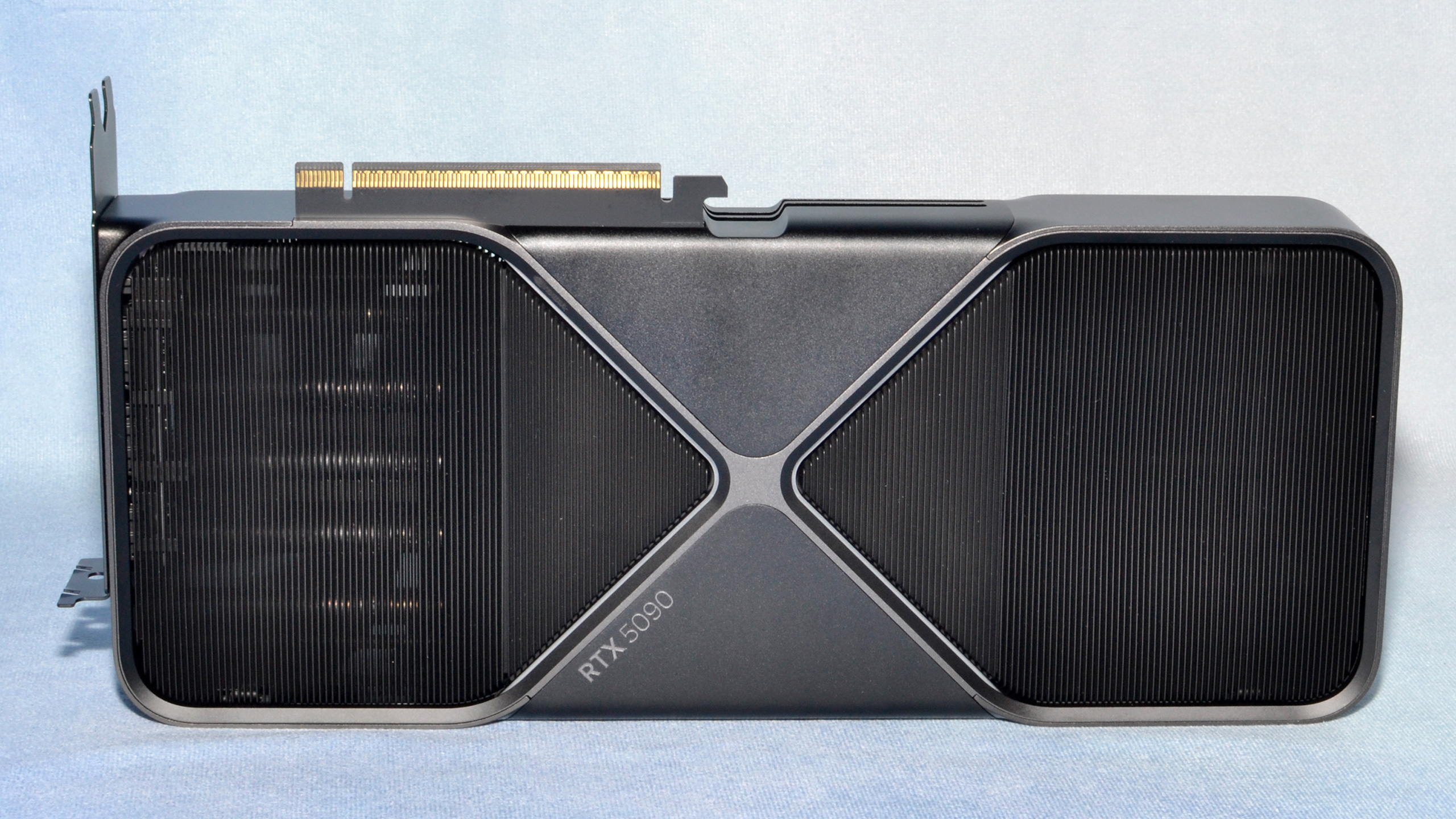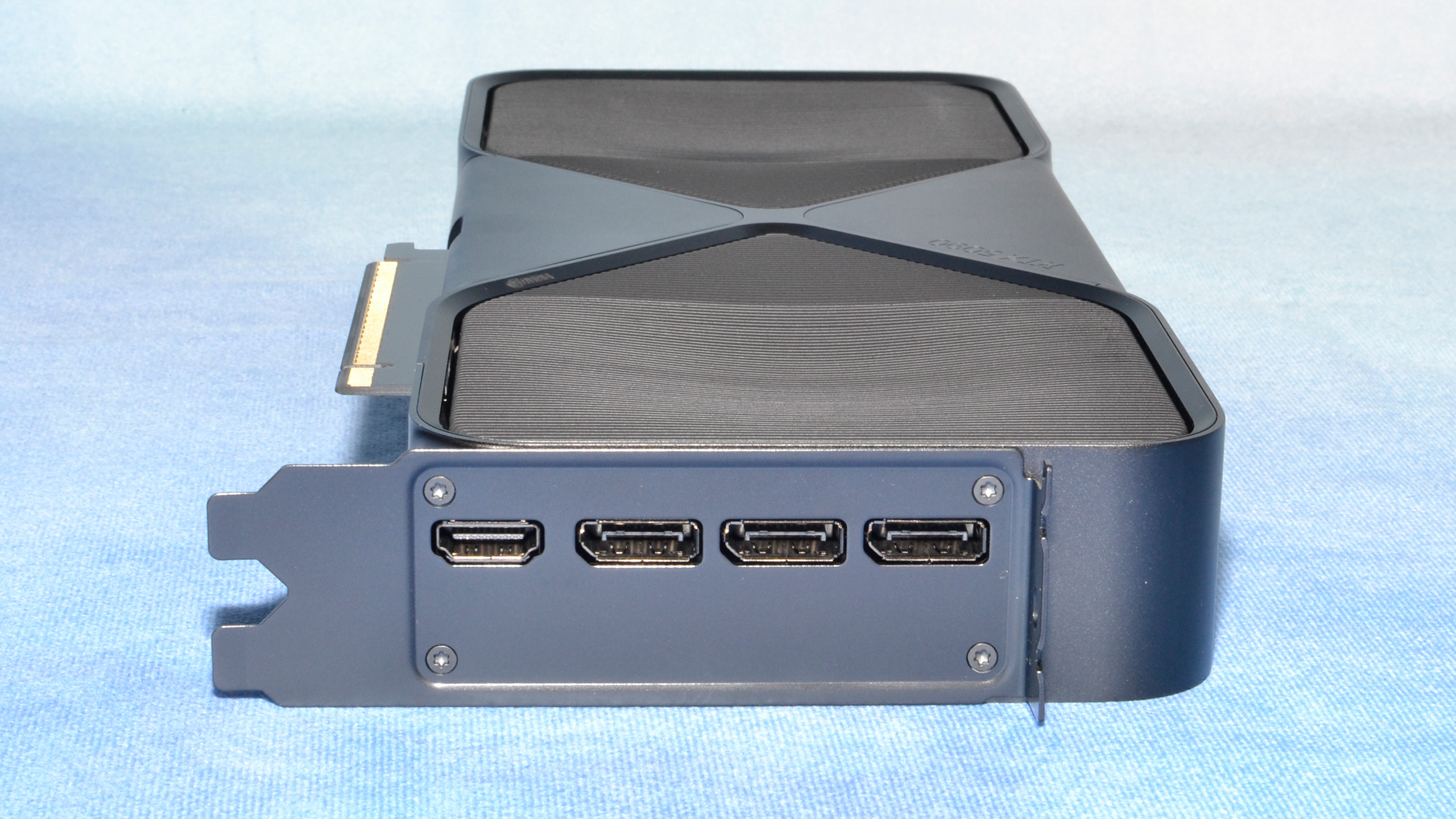Why you can trust Tom's Hardware
For the coming year (starting with the Arc B580 review), we've upgraded our GPU test PC and modernized our gaming test suite. The new system has an AMD Ryzen 7 9800X3D processor, the fastest current CPU for gaming purposes. We also tested the RTX 5090 on our old 13900K test bed, with some at times interesting results. Some games still seem to run faster on Raptor Lake, though overall the 9800X3D delivers higher performance. The margins are of course quite small at 4K ultra.
We're running Windows 11 24H2, with the latest drivers at the time of testing. We used AMD's 24.12.1 drivers, and Nvidia's preview 571.86 drivers for the RTX cards. Note that these changes mean all the results from our GPU benchmarks hierarchy, while still valid for when they were run, need to be refreshed. We'll be working on a revised GPU hierarchy in the coming weeks, but it will be a bit before that's fully ready — we want at least all the current generation cards to be included, and there are plenty of new GPUs coming soon.
Our PC is hooked up to an MSI MPG 272URX QD-OLED display, which supports G-Sync and Adaptive-Sync, allowing us to potentially experience some of the higher frame rates that GPUs like the 5090 can deliver (especially with MFG). Most games won't get anywhere close to the 240Hz limit of the monitor at 4K when rendering at native resolution, which is where framegen and MFG can be useful.
TOM'S HARDWARE AMD ZEN 5 PC
AMD Ryzen 7 9800X3D
ASRock Taichi X670E
G.Skill TridentZ5 Neo 2x16GB DDR5-6000 CL28
Crucial T700 4TB
Cooler Master ML280 Mirror
Corsair HX1500i
GRAPHICS CARDS
Nvidia RTX 5090 Founders Edition
Nvidia RTX 4090 Founders Edition
Nvidia RTX 4080 Super Founders Edition
AMD RX 7900 XTX (reference card)
The new GPU test suite consists of 22 games. We're still looking at some potential changes and additions, but this is where we're at for now. Six of the games in our standard test suite have RT support enabled. The remaining 16 games are run in pure rasterization mode. However, with cards like the RTX 5090, we'll be looking at supplemental testing using some of the most demanding games that feature full RT / "path tracing" support.
All 22 games are tested without any upscaling or frame generation. We do have some additional investigations into things like DLSS 2/3/4 and framegen/MFG, but that's separate from the primary testing. There are noticeable differences between the image quality of DLSS, FSR, and XeSS, as well as differences in how much they can affect performance, which is why we're not using any of them for our baseline measurements.
All games are tested using 1080p 'medium' settings (the specifics vary by game and are noted in the chart headers), along with 1080p, 1440p, and 4K 'ultra' settings. This provides a good overview of performance in a variety of situations. Depending on the GPU, some of those settings don't make as much sense as others, but seeing how a card like the 5090 runs at 1080p can be enlightening. (In this case, 1080p performance is sometimes lower than on a 4090, indicating there's still driver tuning that needs to happen.)
Our test PCs are now running Windows 11 24H2, with all the updates applied. We're also using Nvidia's PCAT v2 (Power Capture and Analysis Tool) hardware, which means we can grab real power use, GPU clocks, and more during our gaming benchmarks. We'll cover those results on page seven.
Finally, because GPUs aren't purely for gaming these days, we run some professional and AI application tests. We've previously tested Stable Diffusion, using various custom scripts, but to level the playing field we're turning to standardized benchmarks. We use Procyon, and run the AI Vision test as well as the Stable Diffusion 1.5 and XL tests; MLPerf Client 0.5 preview for AI text generation; SPECworkstation 4.0 for Handbrake transcoding, AI inference, and professional applications; 3DMark DXR Feature Test to check raw hardware RT performance; and finally Blender Benchmark 4.3.0 for professional 3D rendering.
- MORE: Best Graphics Cards
- MORE: GPU Benchmarks and Hierarchy
- MORE: All Graphics Content
Get Tom's Hardware's best news and in-depth reviews, straight to your inbox.
Current page: Nvidia RTX 5090 Test Setup
Prev Page Nvidia GeForce RTX 5090 Founders Edition Next Page Nvidia RTX 5090 Rasterization Gaming Performance
Jarred Walton is a senior editor at Tom's Hardware focusing on everything GPU. He has been working as a tech journalist since 2004, writing for AnandTech, Maximum PC, and PC Gamer. From the first S3 Virge '3D decelerators' to today's GPUs, Jarred keeps up with all the latest graphics trends and is the one to ask about game performance.
-
Crazyy8 Quick look, raster performance seems a bit underwhelming. Weird that the RTX 5090 can be slower than the 4090(in niche cases). Wasn't going to buy the 5090 anyway, too expensive for a plebe like me. Looking forward to DLSS 4 and how amazing(or not)it'll be.Reply -
Gururu Amazing but expected as far as I am concerned. I don't think there is a lot of need to compare against anything including AMDs new cards. It was brilliant to pair with the 13900 with crazy interesting results. Will read a few more times to glean more details. (y)Reply -
ReplyAdmin said:We also tested the RTX 5090 on our old 13900K test bed, with some at times interesting results. Some games still seem to run faster on Raptor Lake, though overall the 9800X3D delivers higher performance. The margins are of course quite small at 4K ultra.
For me, as a 13900K owner, that's a consolation :cool: -
Gaidax Okay, that IS a sick cooler that actually manages to do the job.Reply
I bet aftermarket 4 slot monstrocities will do better, but for 2 slots 600w that's insane. -
m3city Products like this should receive 3stars max. Great performance but at what cost? Is it the right direction that power draw increases at each iteration? Is it worth to chase max perf each time? For me it would be perfect if 5000 series stayed at same TDP as previous ones - meaning better design, better gpu - with understandably lower increase of perf compared to 4000. And then, 6000 series to have even reversed direction: higher perf with drop of TDP.Reply
And secondary, how come 500W gpu can be air cooled, but nerds on forums will claim you absolutely NEED water cooling for 125W ryzen, cause "highend"?. Yeah, i know 125W means more actual draw. -
redgarl Okay Jarred... you are shilling at this point.Reply
4.5 / 5 for a 2000$ GPU that barely get 27% more performances?
While consuming 100W more than a 4090?
And offering the same cost per frame value as a 4090 from 2 years ago?
Flagship or not, this is horrible.
Not to mention the worst uplift from an Nvidia GPU ever achieved... 27%...
https://i.ibb.co/4fks6Gt/reality.jpg -
redgarl Did you bench into an open bench or a PC case? I am asking because there is some major concerns of overheating because the CPU coolers is choked by the 575W of heat dissipation inside a closed PC Case. If you have an HSF for your CPU, then you are screwed.Reply
https://uploads.disquscdn.com/images/7a5bf4d586b20ffe0aa6281c57d419012a32cbdabd43b3e8050d2aa9a00d6cc1.png -
oofdragon 20% better at 4K and 15% better at 2K, all that having 30% more cores and etc............... got it. Oh boy the 5080 and 5070 are sure going to disappoint a lot of people.Reply
The good news is the RX 9070 will bring 4070 Ti Super performance to the table around $500 including the VRAM, ray tracing and dlss image quality. AMD will prolly counter the multi frame gen nonsense with something like the LSFG 3.0 is doing and smart buyers will finally have a good GPU to replace their 3080 or 6700 XT. -
vanadiel007 They should have given it code name sasquatch, because that's the chance you will be seeing these sell for $2,000 in the coming months.Reply
More like $3,000 and a lot of luck needed to find one in stock.
I pass on it. -
YSCCC a real space heater inside the case, and extremely expensive with not great raw performance increase... sounds like built for those with more money than brain or logic..Reply

